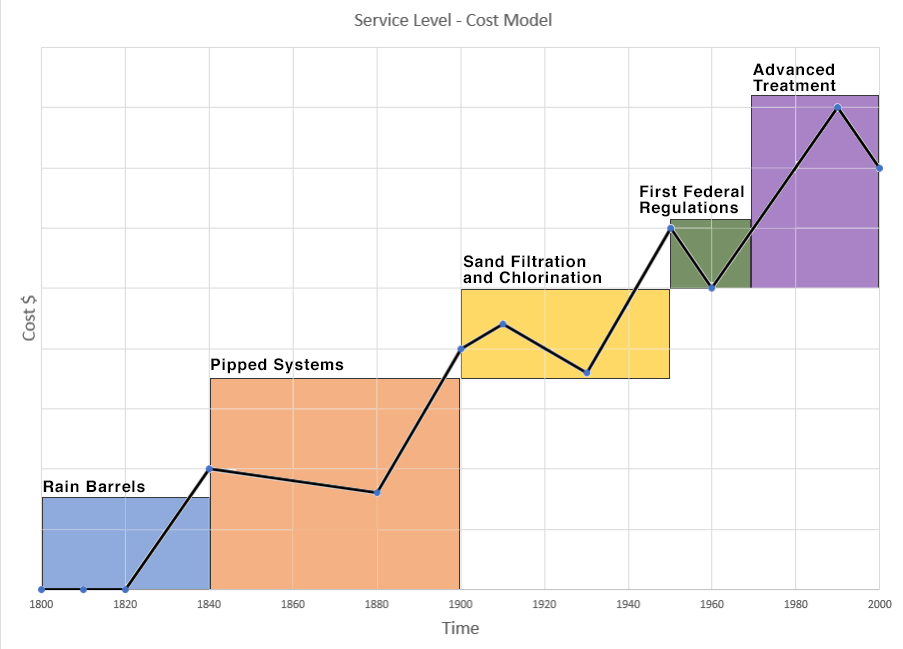How Level of Service Goals Impact System Costs
Level of Service goals are critical for budgeting, planning, operations, management, and allocating resources. There is a direct link between the level of service provided and the resources needed to provide that level of service. There is also a link between the level of service and the cost to the customer. In broad terms, an overall higher level of service results in a higher cost. Consider the change from hauling water from a creek or a well to a household to having untreated piped water to the house. This change provided a higher level of service but comes at a cost. Then going from untreated water to treated water is an increase in level of service and comes at a cost. Moving to modern water systems with treatment, disinfection, pumping, piping, fire hydrants, and storage tanks that provide safe, reliable, quality service greatly increased the level of service provided as well as the cost. However, in considering an individual goal, the tie between level of service and cost may not be quite as direct. In some cases, goals can be created so that the cost stays the same or even potentially decreases, if the system is able to gain some efficiency.
In the cases where higher levels of service on an individual goal basis will result in an increased cost, there is a chance for the system to have an open dialogue with its customers regarding whether they are willing to pay for this increase. For example, customers may complain about secondary or aesthetic contaminants in the water (those contaminants that cause taste, odor, or color issues, but not health concerns) and wish to have these contaminants removed. The water system can install treatment to remove these contaminants, but it will cost each customer more for their water each month. The water system can have a dialogue with the customers to explain what the treatment would entail, what the finished water quality would be, and how much it would cost the customers. Following the discussions, the customers could decide whether or not they were willing to pay for the additional treatment.
A system will have to prioritize spending to match the priorities of the identified level of service goals. The system needs to consider the capital, operation, maintenance, and labor costs associated with their goals, as well as the resources required to measure them. There should be a balance between the quantity of resources (time and money) it takes to collect data and measure progress, and the importance of having the data. A system may need to find a more cost-effective way to measure a goal, or they may have to re-evaluate the goal if it is too costly. Below is an example of how costs have increased with service levels over the years for a water system. It is a graph adapted from a graph created by Ross Waugh, founder of Waugh Infrastructure Management.
Graph 1: Costs associated with service level of specific assets over time for drinking water systems

Higher levels of service do not always mean higher costs for green infrastructure. The upfront cost and long-term maintenance of green infrastructure stormwater systems is understandably a concern for communities. In some cases, upfront green infrastructure capital costs can be more than conventional stormwater systems. However, upfront costs may be recouped due to lower maintenance costs over time compared to conventional gray assets like pipe. Green assets will require more maintenance in the first few years to become established and reach their optimal service level. But once they are established, maintenance requirements will decrease, thus reducing costs while level of service stays consistent or even improves. To keep costs manageable, systems should consider installing green assets with maintenance activities that a department can easily handle, like mowing or cleaning catch basins.
What level of service are people willing to pay for? – Ross Waugh, Waugh Infrastructure Management Ltd, Timaru, NZ
Changing service levels will cause costs to change – Ross Waugh, Waugh Infrastructure Management Ltd, Timaru, NZ